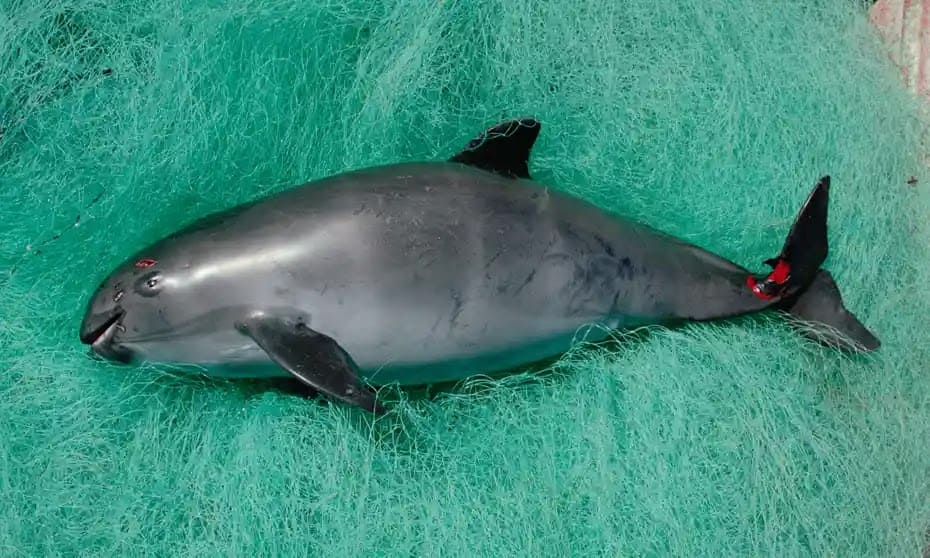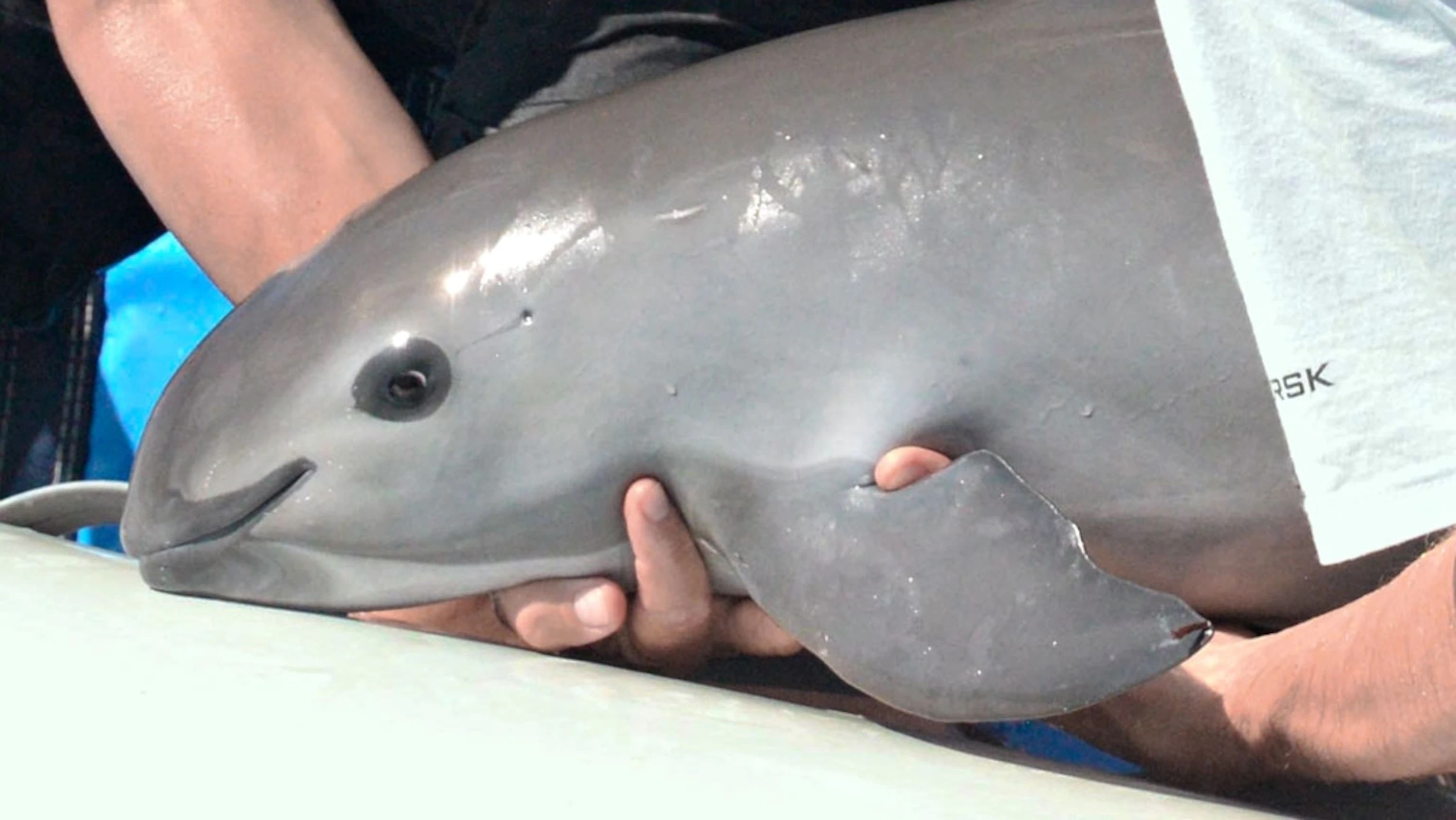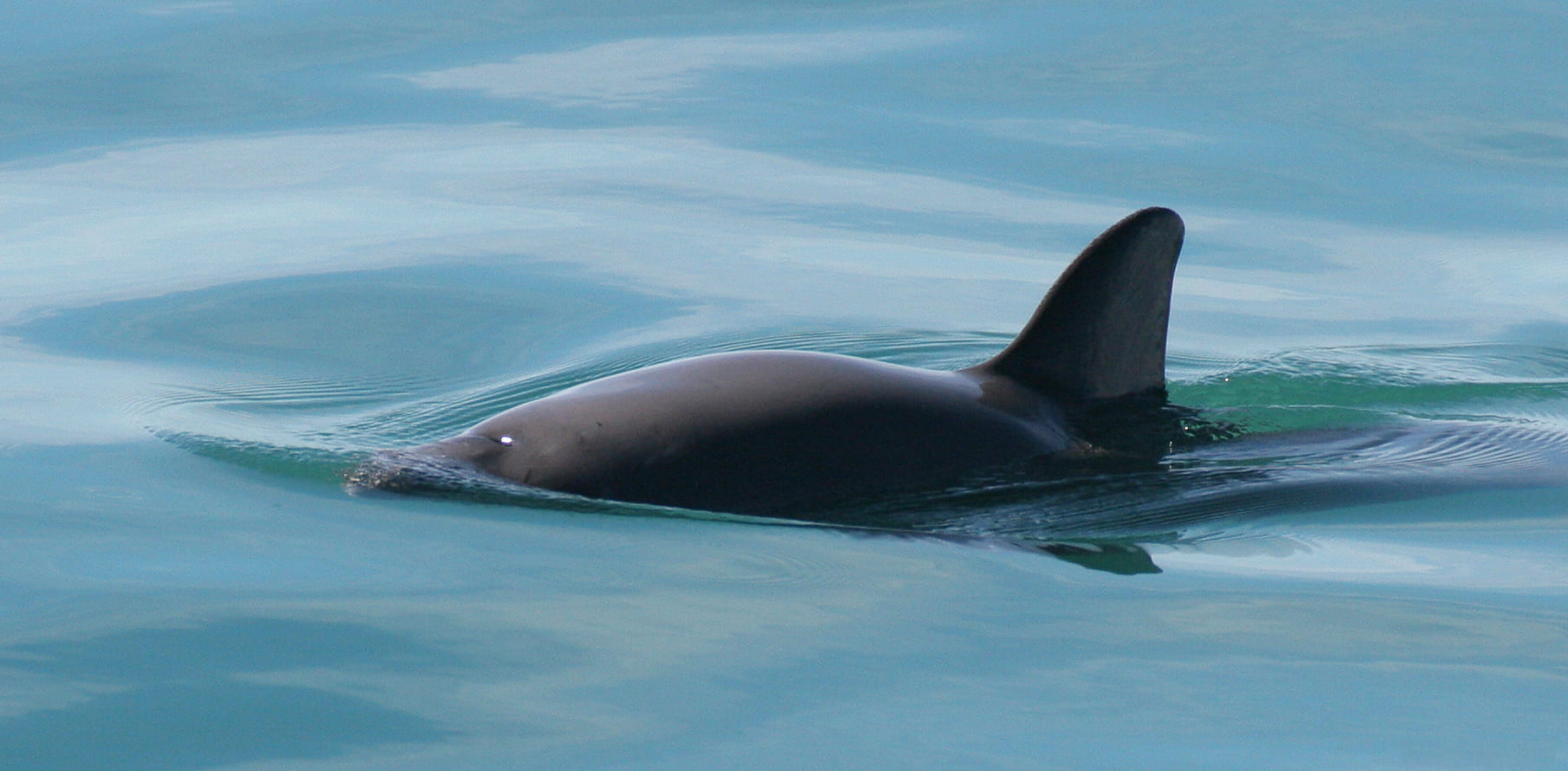ANIMALS
Meet the Captivating Vaquita, One of Earth’s Most Endangered Animals, with Only 10 Individuals Remaining

According to the most recent information, there are only about 10 vaquitas left in their natural habitat. This indicates that we are dangerously close to losing another important species.

“Cocaine of the sea’ threatens critically endangered vaquita – BBC News”
Vaquitas are commonly found in the northern part of the Gulf of California. These animals have been in danger of extinction for a long time. In 1997, their population was around 600, but by 2017, it had dramatically dropped to just 30 individuals.

Sadly, in 2021, the number of vaquitas was recorded at only 10, raising serious concerns about the survival of this species.
The vaquitas, also known by their scientific name Phocoena sinus, are small creatures that reach a length of about 5 feet. When they are fully grown, a vaquita weighs approximately 120 pounds.

These solitary creatures typically live in shallow, warm waters. What sets them apart is that they are the only type of porpoise capable of thriving in warmer temperatures. Other porpoise species require water that is colder than 68°F to survive.
Vaquitas are sometimes referred to as “Sea Pandas” due to the black rings encircling their eyes, which resemble the markings of pandas.

Animals like the white rhino are on the brink of extinction primarily because of poaching. However, vaquitas are not being actively targeted by fishermen.
In Mexico, the main cause of their decline is the traditional fishing methods employed. The use of gill nets to capture totoaba, a fish species also facing endangerment, poses the biggest threat to vaquitas.

Totoabas are highly valued as a delicacy in China, and their price can reach up to $50,000 on the black market. This significant profit has enticed local fishermen to persist in this illegal activity.
Unfortunately, these circumstances also have negative consequences for vaquitas since they often get unintentionally caught in the same fishing methods used for totoabas.

Andrea Crosta, a member of a wildlife trafficking monitoring organization called Earth League International, recently visited Mexico to share alarming news about the critically endangered vaquita population.
According to Crosta, the remaining vaquitas are in imminent danger of being lost due to illegal fishing activities. However, organizations like WWF and Viva Vaquita have suggested that there may still be a possibility to rescue a few of these precious creatures.

In 2017, the conservation organization Vaquita CPR initiated a rescue mission. Regrettably, the attempt to relocate the vaquitas was not successful, as the animals became stressed during the process. Tragically, this rescue project resulted in the loss of many female porpoises shortly after. Some may propose confining the vaquitas instead, but the heartbreaking outcome of the previous rescue effort was deeply distressing.

According to Crosta, it is crucial for us to persist in our efforts to protect vaquitas. Organizations like Elephant Action League and Sea Shepherd are actively involved in monitoring the Gulf of California and uncovering the routes involved in the trafficking of vaquita products to China. Their ongoing work plays a vital role in combating this issue.
“We would definitely bring the guilty to justice even if they kill all the vaquitas!”
It is our collective duty to save the vaquitas. So, why not unite and work together to protect these innocent animals? We welcome your ideas and suggestions in the comments section. Don’t forget to share this article to spread awareness! Together, let’s make a difference and help save the vaquitas!
ANIMALS
Amazing Video of Unseen Ocean Creatures in the Ningaloo Canyons

The Schmidt Ocean Institute recently explored the Ningaloo Canyons on the western coast of Australia using a robotic underwater vehicle called the ROV Sebastian. Check out the amazing video of what they discovered in the deep parts of the Indian Ocean.
More info: Youtube




ANIMALS
These Pics Are Art and the Artists Are Insects

Flying insects move so quickly that they are hard to follow, but new technology and some smart ideas have helped Spanish photographer Xavi Bou do just that. After spending 10 years focusing on birds in flight for his Ornithographies project, he turned his attention to insects.
For Entomographies, he uses high-speed video footage taken by Adrian Smith, an insect expert at North Carolina State University, to study and record how insects move. Bou then picks multiple frames and combines them into single images that show the fast movements of one or more insects through space and time.
With Smith’s help, Bou has captured the aerial tricks of wasps, the jumps of leafhoppers, and the fluttering of butterflies in amazing detail. He hopes that by doing this, he can make people more aware of the decline in important insect populations around the world.
1. Zebra longwing
This butterfly, which is common in many areas of the Americas, really fits its name. It can fly very high with just a few flaps of its large wings.
 Image source: nationalgeographic
Image source: nationalgeographic
2. Two-lined spittlebug
This insect, which comes from the eastern United States, is often seen as a pest because it likes to eat grass. Its springy back legs can make it jump into the air like a rocket.
 Image source: nationalgeographic
Image source: nationalgeographic
3. Yellow-collared scape moth
Unlike most moths, this North American species flies during the day. Its shiny blue-black wings sparkle in the sunlight.
 Image source: nationalgeographic
Image source: nationalgeographic
4. Ailanthus webworm moths
These tropical moths have spread farther north in the U.S. Because of their larval host, the invasive tree of heaven, they are now one of the most common backyard moths in the country.
 Image source: nationalgeographic
Image source: nationalgeographic
5. Common stonefly
Mostly found in eastern North America, this insect starts its life as an underwater nymph in forested streams or rivers. Then it leaves the water, sheds its skin, and becomes an adult with wings.
 Image source: nationalgeographic
Image source: nationalgeographic
6. Green lacewings
Eighty-seven species of this insect have been found in the U.S. and Canada. Since they eat a lot of unwanted plant pests like aphids and mites, they are often used to naturally control these pests.
 Image source: nationalgeographic
Image source: nationalgeographic
7. Grapevine beetle
This insect, fittingly named, eats the leaves and fruit of grapevines, both wild and farmed, but it doesn’t do much damage to the plants. As a type of scarab beetle, it often flies in a curved path.
 Image source: nationalgeographic
Image source: nationalgeographic
8. Oak treehopper and green treehopper
Treehoppers are known for their uniquely shaped pronotum, the part behind their head, which often looks like plant parts to hide from predators. They can jump well thanks to special muscles.
 Image source: nationalgeographic
Image source: nationalgeographic
9. Banded orange
This brightly colored butterfly can be found from Mexico to Brazil. Before mating season, male butterflies look for mineral salts, sometimes even drinking salty fluids from the skin, eyes, and nostrils of other animals.
 Image source: nationalgeographic
Image source: nationalgeographic
10. Sapho longwing
Longwings can live for 6 to 7 months, longer than most butterflies. This type, found from Mexico to Ecuador, has shiny blue wings, which is why it’s also called the Sapphire longwing.
 Image source: nationalgeographic
Image source: nationalgeographic
ANIMALS
Eagle and Fox in an Epic Midair Battle Over a Rabbit, Were Captured by a Photographer

Wildlife photography often depends on the perfect combination of good timing and the right place.
That’s exactly what happened when Kevin Ebi, an experienced wildlife photographer, captured an incredible battle between a bald eagle and a red fox, both competing for a rabbit meal.
In a detailed blog post, Ebi shares the fascinating series of events that unfolded while he was photographing foxes in San Juan Island National Historical Park, located in Washington state.
Ebi noticed a lively group of eight fox kits as they began their hunting lessons. Suddenly, they spotted a rabbit, and a thrilling chase ensued. Eventually, one of the foxes emerged as the winner, proudly carrying the rabbit across the field.
 Image source: Kevin Ebi
Image source: Kevin Ebi
Ebi shares what happened at that moment: “As I followed the fox with my camera, a sudden bald eagle cry caught my attention. It was swiftly approaching, clearly aiming for the rabbit. I quickly focused on the fox, anticipating a quick turnover of events.”
To Ebi’s astonishment, instead of a quick surrender, the situation turned into a intense fight in the air.
The eagle used its power to lift the fox and rabbit high up in the sky. Even while airborne, the fox attempted to break free by swinging back and forth.
 Image source: Kevin Ebi
Image source: Kevin Ebi
 Image source: Kevin Ebi
Image source: Kevin Ebi
 Image source: Kevin Ebi
Image source: Kevin Ebi
In the end, the eagle moved the rabbit to its other claw, causing the fox to let go. The intense battle came to an end in less than 10 seconds.
 Image source: Kevin Ebi
Image source: Kevin Ebi
For those worried about the fox’s well-being after the fight, Ebi reassures that it was not injured. The fox swiftly bounced back from the encounter and resumed its playful behavior with the other young foxes, showing no visible wounds from the aerial clash.
 Image source: Kevin Ebi
Image source: Kevin Ebi
 Image source: Kevin Ebi
Image source: Kevin Ebi
 Image source: Kevin Ebi
Image source: Kevin Ebi
 Image source: Kevin Ebi
Image source: Kevin Ebi
-

 GARDEN10 tháng ago
GARDEN10 tháng ago4 Easiest Ways to Get Free Plants
-

 ANIMALS10 tháng ago
ANIMALS10 tháng agoBritish Angler Caught Huge 67-Pound Goldfish in the World
-

 FUNNY10 tháng ago
FUNNY10 tháng ago30 Weirdest Things That People Came Across On The Subway
-

 FUNNY10 tháng ago
FUNNY10 tháng ago30 Funny and Perplexing Photos That Make You Laugh All Day
-

 GARDEN8 tháng ago
GARDEN8 tháng ago30 Shimmering Side Yard Landscape Ideas
-

 FUNNY10 tháng ago
FUNNY10 tháng ago22 Design Fails That Will Make You Laugh Out Loud
-

 ANIMALS10 tháng ago
ANIMALS10 tháng agoKindhearted Driver Rescues Skinny Dog Hiding Near Highway Thanks to His Eagle Eye
-

 ANIMALS10 tháng ago
ANIMALS10 tháng agoMore Than 3 Million People Baffled by Video of Strange Figure on the Beach





